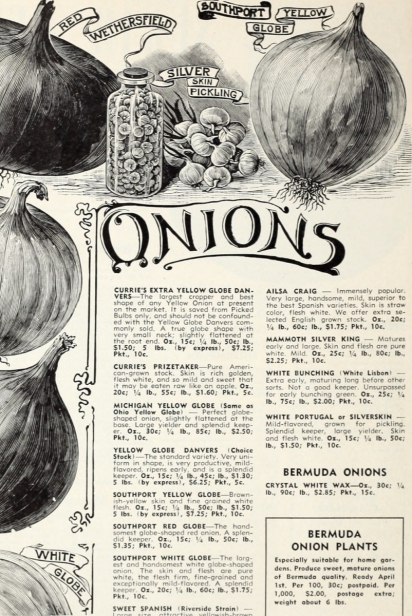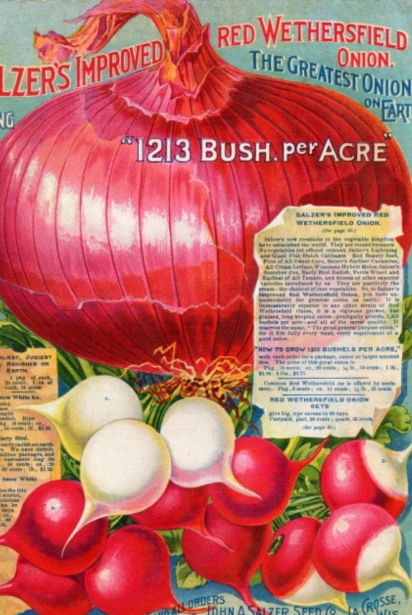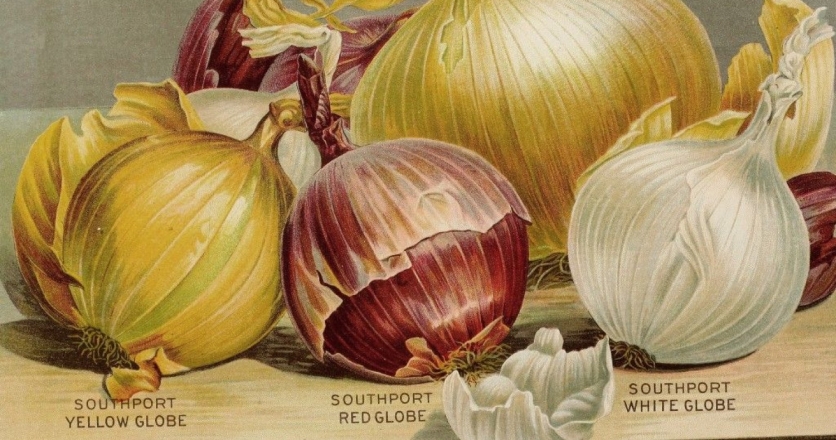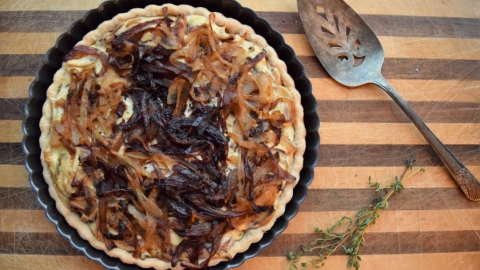Peeling Back History
The fact that Connecticut was once a famous onion-producing state is a surprise to some. It becomes even more surprising when the two foremost onion towns – Westport and Wethersfield – are mentioned. Known today for being charming residential communities, it seems like a historical joke that, a century ago, everyone who passed through them remarked on the pungent smell of onions.
Wethersfield was Connecticut’s first onion-producing town; farmers used the deep river soil as early as the 1600s to plant, harvest, then sell these fragrant root vegetables. They developed the Wethersfield Red Onion and exported them from their own small harbor to the Caribbean, sometimes to be used as food for slaves. At the peak of the trade, this small town alone exported 1.5 million 5-pound ropes – also known as skeins – of onions a year. The young women who took on much of the work of planting and harvesting were called “onion maidens,” and their continuous “weeping” was a famous attraction. Many earned a good living in this trade but were often slandered and gossiped about by women and men from nearby towns.
In the early 1800s, Wethersfield was noted as the only “onion town” in the state, and the “strong savour” of the air was remarked on by many. One newspaper reported that, “the atmosphere becomes impregnated, and the luscious qualities of the onion are wafted far and wide upon every passing breeze.” For onion growers, it smelled like success. The Comstock, Ferre & Co. catalog from 1856 notes that their popular onion “grows to large size, deep red, thick, approaching to round shape, fine-grained, pleasant flavored, and very productive.”
By the middle of the 19th century, a decline in the trade and a blight of “pinkroot” began to wreck the industry in this river town. By that time, another Connecticut community, Westport, was ready to take over the trade. Farmers there began planting onions just before the Civil War, developing their own varietals: Southport Yellow, White, and Red Globe Onions. These rich, large root vegetables first became local favorites, and then as prices rose, the industry expanded, as local farmers began to plant more and more.
Surrounding towns in Fairfield County joined in the production. Soon, railroad cars full of onion barrels chugged down the New Haven Line to the big city, and onion-heavy schooners left Southport every week to sail west on the Sound. The onions were sold in New York markets, often purchased by the government to feed soldiers. By the end of the century, competition from large farms, an outbreak of cutworms, and farther-ranging methods of shipping put an end to the commercial industry in Westport. Farmers still grew onions for local consumption, but one by one, those farms were sold for summer homes, resulting in the upmarket suburb we are familiar with.
Today, “Seed Huntress” Sefra Alexandra has helped revive these iconic Southport Globe Onions in the seaside town, while the Comstock, Ferre & Co. store in Wethersfield, still in operation, sells seeds for the Wethersfield Red. Onions are more popular in the kitchen than ever but are too often used as mere flavoring, despite their densely nutritive value. Indeed, a cook has to search through old recipe cards to find anything beyond onion rings or French onion soup in which these versatile vegetables take the leading role. However, fritters, pies, and pizzas are all great ways to bring their flavor forward. Find, below, another great way to give onions center stage on your table. The following recipe for onion tart will have your mouth watering…and, possibly, your eyes.












